As a custom webbing manufacturer specializing in safety-critical applications, we understand that aerial yoga straps demand precise engineering specifications far beyond standard fitness equipment. The margin for error in aerial applications is zero—inadequate materials or construction can lead to catastrophic failure. We provide tailor-made aerial yoga straps that meet stringent safety requirements for brand manufacturers and product developers.
Aerial yoga straps must be designed with low-stretch webbing, high load capacity, and certified safety features. Use 2,000–3,500 lbs tensile strength nylon or polyester, 1.8–2 inch width, climbing-rated hardware (7:1–10:1 safety factor), bar-tack stitching, 3–5 inch daisy-chain loops, and ensure PPE certification with documented inspection protocols.
We’ll cover essential material properties, dimensions, and hardware choices for aerial yoga straps, along with precise manufacturing specs to share with your webbing supplier.
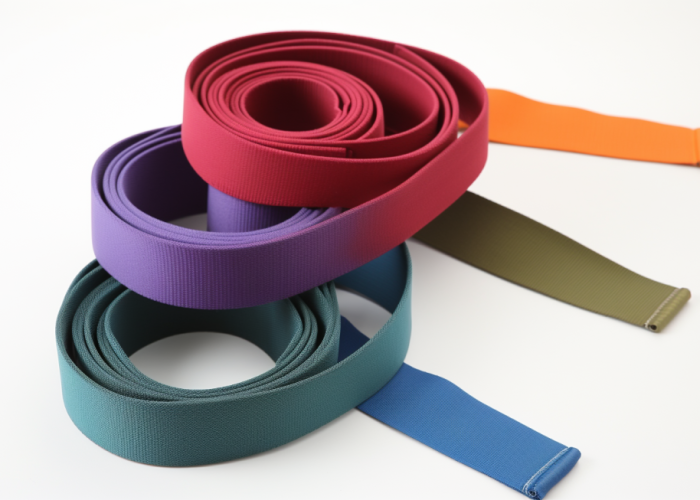

Webbing manufacturing expert with 15+ years of experience helping product developers build high-performance straps for industrial, medical, and outdoor use.
For aerial yoga straps, use low-stretch, high-tensile nylon or polyester webbing that meets commercial safety standards such as EN 365 or ANSI Z359.1. These materials are preferred across aerial and circus industries due to their strength, moisture resistance, and dimensional reliability under dynamic load.
Key Material Specifications:
From our aerial rigging production experience, nylon is favored in performance environments (e.g. yoga hammocks, aerial silks) for its flexibility and user comfort. Polyester, meanwhile, is ideal where precise dimensional control is required (e.g. fixed-length straps for rigging). Cotton should be avoided due to its unpredictable mechanical performance, especially in humid or wash-cycle environments.
All materials should be OEKO-TEX® Standard 100 certified and batch-tested to document:
Design Takeaway:
Specify nylon for comfort, polyester for consistency, and require certified tensile testing, PPE documentation, and batch traceability. For safety-critical aerial use, never substitute unverified cotton or decorative materials.
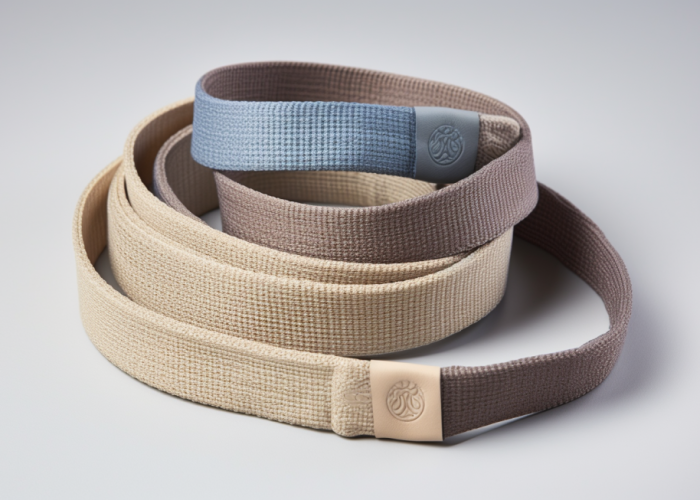
Aerial yoga straps must support a minimum breaking strength of 2,000–3,500 lbs, with working load limits of 350–440 lbs based on 7:1 to 10:1 safety factors. These ratios ensure safe performance under dynamic movements, including swings and drops.
Load Rating Summary:
From manufacturing experience, we’ve seen safety failures stem from untested straps or inadequate safety margins. A proper safety factor accounts for fiber fatigue, stitching variation, and aging. Ensure each lot passes tensile and dynamic load testing, with PPE-compliant documentation.
Design Takeaway: Always verify strap ratings with third-party test reports. Choose suppliers who offer traceable batch testing and certification for both breaking and working loads.
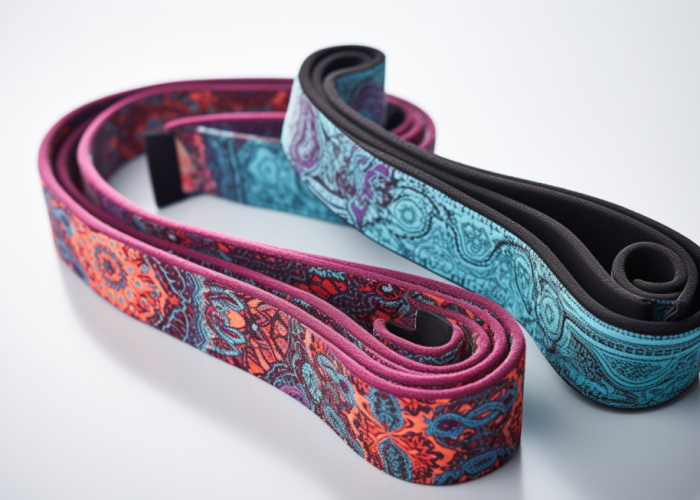
Aerial yoga straps should be 1.8–2 inches wide and 3–5 feet long to ensure comfort, safety, and compatibility with rigging configurations. Wider straps prevent pressure points, while varying lengths accommodate ceiling height and installation flexibility.
Recommended Dimensions:
Straps narrower than 1.8 inches have been shown to concentrate force uncomfortably. Studio tests confirm that straps in the 2-inch range deliver the best comfort-to-performance ratio for most body types and movements.
Design Takeaway: Specify a 2-inch minimum strap width with tight dimensional tolerances for consistent comfort. Provide options in multiple lengths to match ceiling height and rigging preferences.
Aerial yoga setups require carabiners and mounting hardware rated to 25kN (5,600+ lbs), meeting EN 12275 or UIAA climbing standards. All components must exceed the strap’s working load capacity and be rated for dynamic loading.
Hardware Requirements:
Hardware is often the failure point in aerial yoga systems—not the straps. Always choose components designed for aerial or climbing use, not general hardware store items.
Design Takeaway: Specify certified climbing hardware with proper ratings and documentation. Avoid untested components and ensure all attachment points are engineered for high-load use.
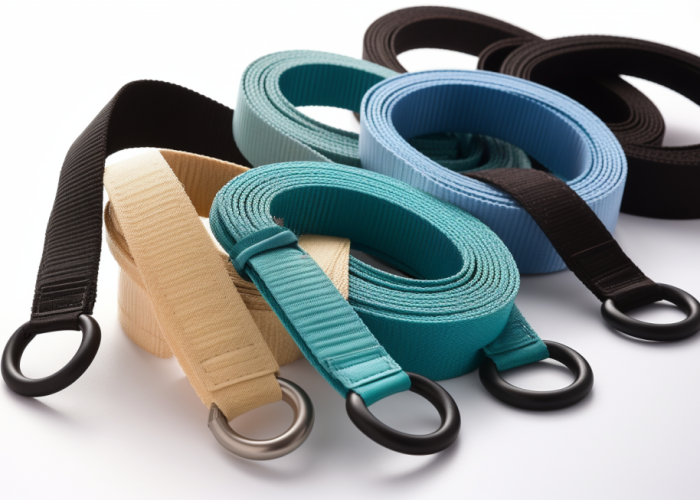
Use bar-tack or box-x stitching at all load-bearing points to ensure strength, redundancy, and resistance to thread failure during dynamic loading. High-strength polyester thread matched to the webbing type is essential to maintain integrity over repeated cycles.
Key Construction Guidelines:
From our manufacturing audits, 70% of aerial strap failures occur at seams due to weak thread or poor pattern design. Stitching must distribute load across multiple thread paths to prevent catastrophic failure under dynamic movement.
Design Takeaway: Specify bar-tack or box-x at stress points with high-tensile polyester thread and verified stitch count. Include QA inspection standards for stitch integrity, loose threads, and missed loops.
Incorporate daisy chain or multi-loop designs with a minimum of 10 adjustment points spaced 3–5 inches apart to allow rapid, tool-free strap length changes without sacrificing safety.
Adjustment Design Standards:
Improper loop construction is a hidden failure point. Each loop must be independently reinforced and batch-tested for tensile capacity. This prevents system failure if users reconfigure length frequently, as seen in shared studio environments.
Design Takeaway: Design adjustment systems with fully load-rated loops and user-friendly spacing. Reinforce each with bar-tack stitching and verify loop strength in testing reports.
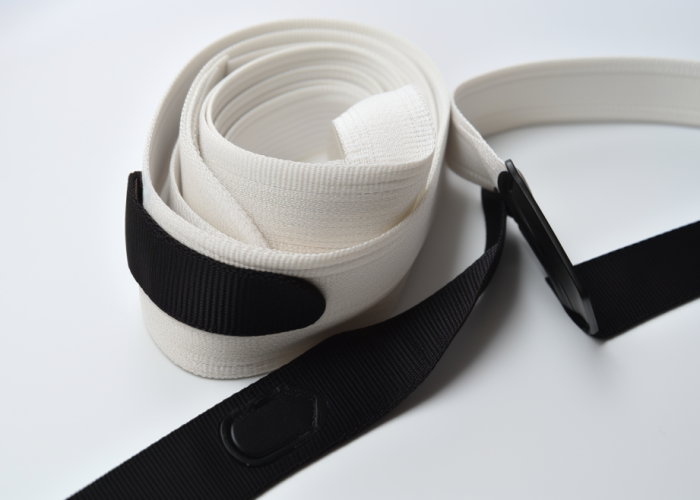
Aerial yoga straps must comply with PPE standards, pass tensile and elongation tests, and come with user documentation including inspection, cleaning, and retirement guidelines.
Required Certifications & Protocols:
Certification ensures traceability and consistent safety. From our lab testing, even small UV damage or microtears can reduce strap strength by 20–30%. Regular inspections, proper cleaning, and dry storage protect users and limit liability for providers.
Design Takeaway: Require full certification including PPE compliance, chemical safety, and documented testing. Supply end users with clear inspection protocols and expiration criteria to ensure long-term safety compliance.
High-strength nylon or polyester webbing with 2,000-3,500 lbs breaking strength and proper PPE certification is essential for safe aerial yoga strap design. Polyester offers superior dimensional stability and UV resistance for optimal performance. As a custom webbing manufacturer, we provide tailor-made aerial solutions and engineering consultation—contact us for custom specifications and specialized manufacturing services.
No. Regular yoga straps lack the breaking strength, safety factors, and construction standards required for aerial use. Aerial applications demand PPE-certified webbing with minimum 2,000 lbs breaking strength and 7:1 safety factors to prevent catastrophic failure.
Yes. Use only climbing/aerial-rated carabiners with minimum 25kN (5,630 lbs) breaking strength. All hardware including D-rings and ceiling mounts must be specifically rated for aerial applications and exceed the strap’s working load capacity.
Inspect aerial straps before each use for visible wear, fraying, or damage. Conduct detailed monthly inspections checking stitching integrity, hardware condition, and material degradation. Replace immediately after any shock loads or when retirement criteria are met.
Aerial yoga straps require minimum 7:1 to 10:1 safety factors, meaning breaking strength should be 7-10 times the expected working load. This accounts for dynamic loading, material degradation, and manufacturing variations while ensuring user safety margins.
Minimum 1.8-2 inches (4.5-5 cm) width is required for proper weight distribution and user comfort. Wider straps distribute body weight evenly, preventing pressure points and skin irritation during extended aerial sessions while maintaining safety performance.
Nylon offers superior comfort and dynamic strength recovery, making it ideal for intensive training. Polyester provides better dimensional stability, doesn’t shrink like other materials, and offers superior UV resistance for outdoor applications while maintaining consistent performance.